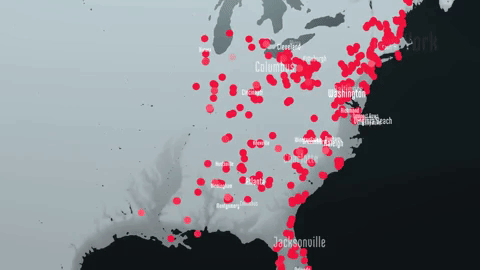In what seems like an incredibly timely release, Media, Pa.-based developer and data scientist Neil Halloran released the first part of a deep-dive web documentary on nuclear war (and peace) called The Shadow Peace.
The 15-minute video, which intertwines live vids with interactive animation, is the sequel to his viral The Fallen of World War II. Two years in the making, the documentary shares a wealth of stats in a haunting, gripping look at the post-WWII world.
As Gizmodo pointed out in a post this morning, the Penn grad also put his research skills to work to project the casualties of an all-out nuclear war.
Below is the vid, but for the fully-interactive viewing experience you might want to click here.
Halloran, who owns a dev shop called Higher Media with his brother Mark Halloran, said a challenge in the relatively new medium for storytelling is making sure the viewer doesn’t lose grip of the story by focusing on the interactive portion.
“It’s all about figuring out how and when to use interactivity,” Halloran told Technical.ly. “It’s a helpful tool in cracking a film: giving the viewer a choice, but ultimately I think linear format is better to show data.”
The maker cites three main sources of inspiration for the narration: Hans Rosling’s data-packed TED Talks, data visualizer Kim Rees and her work around gun violence; and the works of Harvard professor Steven Pinker.
Though the first part of the series took two years to ship, Halloran is aiming to release the second part less than a year from now. He’s launched a Patreon campaign to help support the documentary series.
Ultimately, he says, viewers should be left with the sense that even though today’s world might seem scary, things have been more or less moving in the right direction after 1989, thanks to the work around proliferation and nuclear safety.
“If we can keep working on it, we can reduce the risk,” Halloran said.







